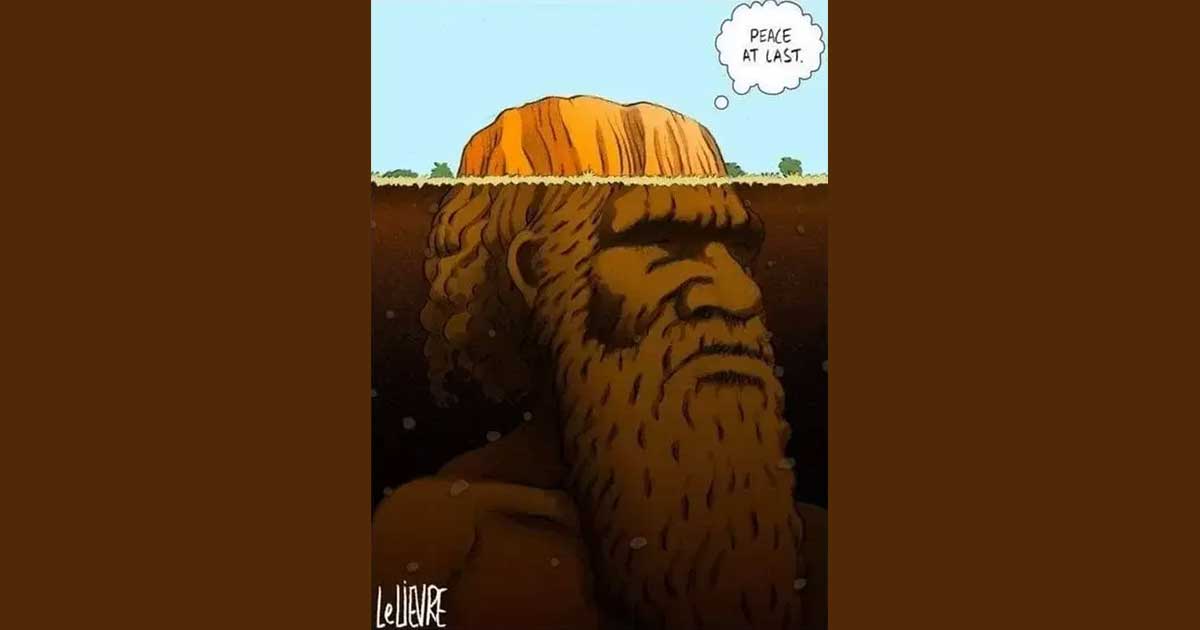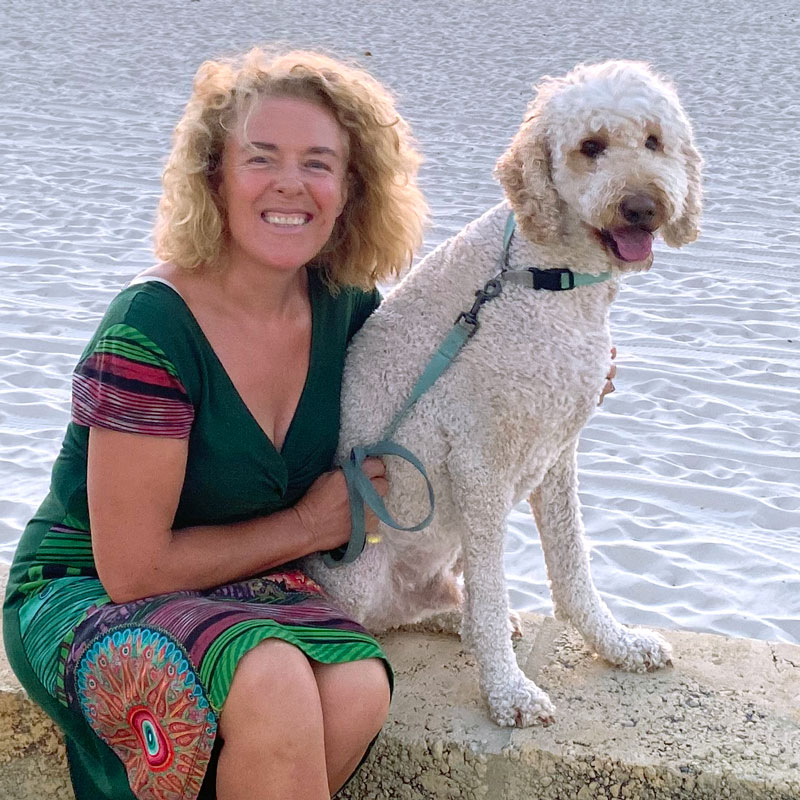This week I’m trying to get my head around how we treat each other, with a focus on respect for each other’s rights.
At the time of writing this I am saddened by the images I see in the news – lines of people queuing to climb upon the sacred red rock that is Uluru. For those of you not familiar with this stunning wonder of the world, Uluru is a sandstone formation that stands 348 m high, rising from its base below ground to 863m above sea level with a total circumference of 9.4 km. It is a major feature of the Uluru-Kata Tjuta National Park which is located in the centre of Australia, a few hundred kilometres from Alice Springs. Also known as Ayer’s Rock, it is thought to have started forming around 550 million years ago. The area around the formation is home to springs, waterholes, rock caves and ancient Aboriginal paintings.
A site of significant value
In 1987 Uluru-Kata Tjuta National Park was internationally recognised as a World Heritage site. It is one of the few places in the world to be dual-listed by the United Nations Educational Scientific and CulturalOrganisation (UNESCO) for outstanding natural values and outstanding cultural values. And why is this? Because it is a living cultural landscape that is considered sacred to the Yankunytjatjara and Pitjantjatjara, the Indigenous people of the area. The spirits of their ancestors continue to reside in this sacred place making the land a deeply important part of Aboriginal cultural identity. Anyone who has been to this area will agree that there is something awe-inspiring about the place that stirs the spirit.
Plea for respect
The hundreds of people clambering onto the rock were motivated by the fact that it was their last chance to set foot on Uluru. An official ban came into place on Friday after decades of campaigning by the traditional custodians to put an end to the anguish they have suffered by people climbing all over the sacred site. For years they have pleaded gently by putting up signs asking for respect. Sadly there remains a section of the population that is resistant to decisions made by Aboriginal people concerning lands returned to them under the Aboriginal Land Rights Act established in the 1970s.
I am baffled by the ignorance of people who think it’s acceptable to trample over a sacred place in order to get a photo or tick a box. Every person climbing the rock last week had to first pass a sign asking them to consider Uluru’s deep cultural significance and to think twice about going up. The sign read,
Please don’t climb, Uluru is sacred in our culture.
It is a place of great knowledge. Under our traditional law climbing is not permitted.
Think beyond your own needs
But this did not deter them. They chose not to respect the wishes of the Indigenous custodians of the land and showed a blatant disregard for their cultural rights. It’s as though some people cannot think beyond their own needs.
Imagine what would happen if people walked all over altars, taking selfies, in Christian places of worship? There would be uproar!
A painful past
It opens a can of worms that many white Australians are in complete denial about. The inequality still exists despite the fact that the Indigenous inhabitants of Australia can trace their ancestry as far back as 40,000 years ago. They have a strong relationship with the land and a connection both spiritually and physically with the community in which they live. Their connection with the land is manifested in their respect for sacred sites and the ceremonies that are performed there. Their culture is very much based upon a system of beliefs and laws that are expressed through music, song, dance and paintings. About two hundred years ago things began to go horribly wrong for the native people of Australia with the arrival of the first fleets from England. Their customs and traditions were deemed uncivilised by many of the new arrivals and from there the disenfranchisement began and continued ever since because of Australia’s policies of ethnocentrism and control. Indigenous people were cut off from their land which directly impacted on their access to sacred sites and consequently hindered their ability to practice their culture and traditions.
There have been a number of events in the past that have directly impacted on how Indigenous people see themselves. The most significant of these is the issue of the stolen generation where children were literally kidnapped and taken away from their families, many never being reunited again. This had catastrophic consequences for the families and the entire community. It has been the cause of significant emotional, mental and physical illness amongst the communities affected.
Another issue that has greatly influenced how Indigenous people view themselves is the way they weren’t afforded the same rights as non-Indigenous Australians until recent years. Again this has fundamentally damaged their view of themselves and paved the way for an ‘us’ and ‘them’ culture. Anecdotal evidence abounds when it comes to inequalities that exist within the system resulting in the mistreatment of Indigenous Australians.
Finally victorious
Despite this ongoing lack of respect, it is wonderful to see these people who have been discriminated against for almost two hundred years rise up victoriously in relation to Uluru. There is still a long way to go before there is equality for all in Australia but I am encouraged by the small steps that are being taken. It’s going to take many generations to heal their pain and for them to believe that they are just as deserving as the rest of us.
Human trafficking gone badly wrong
Another news story that has upset me in recent days was the horrific discovery of 39 dead bodies in the back of a truck in the UK. To think that their lives meant so little and could be trafficked and treated with no respect in exchange for money is simply too much to bear. It’s yet another example of white privilege at play. We look down on those who are marginalised and don’t afford them the same rights as people who have been lucky enough to be born into a society that can provide for them in every way. I am one of those. There but for the grace of God go I, with my European AND Australian passports, my white privileges and my earning power. The sad truth is that everything has a price under free-market capitalism which is founded on competition and greed. ‘Profit before people’ seems to be acceptable as long as we get what we need. But putting a price on a person strips them of their dignity. In the case of the 39 victims in the back of that truck, their lives meant nothing more than the means to make money for an unscrupulous few. They were degraded in the most appalling way and stripped of their human right to life in the name of profit.
Damaged moral compass
There is clearly something very wrong with the way we think as a society. Our moral compass is broken, rusted by the very social philosophy upon which our lives have been structured. Something radical has to be done to bring about a change to the way we treat each other. None of us are getting out of here alive so perhaps it’s time that we started to help one another more to have a good life while we can. In a more fair and equitable society would there be a need for human trafficking? And would it be necessary for someone to have to abuse the rights of others in order to feel better about themselves?
Let’s start with ourselves
Respect for each other starts with each of us. I feel a shift in my heart as I ponder man’s inhumanity to man for I believe I can be a positive presence for others in my day-to-day life. Just like the Chris de Burgh song goes, ‘Every drop of rain will someday make a river’, each of us can be a light that shines on the darkness of the world so that we bring hope and courage to others. Thanks for taking the time to read my ponderings this week. I look forward to sharing more with you next week. Love Gill
P.S.: a note about this week’s photo: This is the first week I have used a photo taken by somebody other than myself. I want to acknowledge Glen Le Lievre, the award-winning cartoonist and illustrator for this veracious piece of art.

